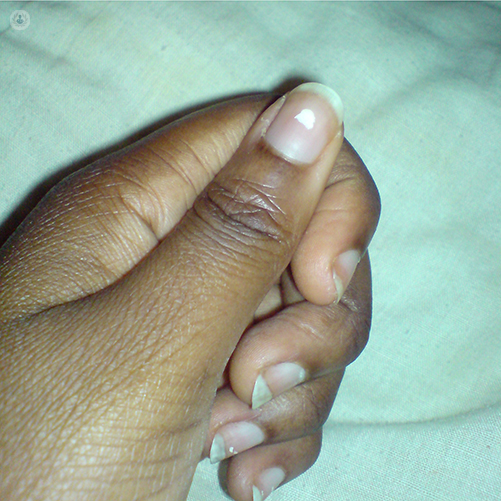Nail diseases
What are nail diseases?
Your nails can be an indicator of your general state of health, signalling problems and issues through discolouration and overall growth rate. Discolouration can be an indicator of kidney, heart and lung diseases, among other conditions. Therefore it is important to keep an eye on your nail health as their appearance can be an indicator of other pathologies.
However, certain conditions affect the nails directly, such as onychomycosis (fungus), ingrown toenail (when the sides of the nail sink into the foot) and anonychia (total or partial lack of the nail).
If you are seeing a change in the condition of your nails, a dermatologist will be able to diagnose the cause of the issue.

What are the symptoms of nail diseases?
Symptoms of nail conditions include:
- discolouration
- being brittle, splitting, or easily breaking
- yellowing of the nail bed
- small white patches
- white lines across the nails
- ridges developing across the nail
- pitting
- irregular thickness
What are the causes of nail diseases?
There can be multiple causes, but overall nail health and the appearance of the nails can often be affected by inadequate nutrition and lack of vitamins and minerals that the body needs.
Other causes include:
- trauma
- infection/fungal infection
- allergies
- viral warts
- frequent submersion in water or cleaning products
- lack of regular care
Can nail diseases be prevented?
In order to keep nails as healthy as possible, it is important to regularly trim them and keep them clean, as well as avoiding the excessive use of chemicals or cosmetic products. As discolouration can be caused by other illnesses, it is important to have regular health check-ups and live a healthy lifestyle to try reduce the risk of long-term or serious conditions developing. If you are worried about your nails and how they look, you can visit your GP, who may refer you to a dermatologist if necessary.
What is the treatment for nail diseases?
The treatment depends on the pathology of the nails. For example, if it is a fungus, a kind of chemical descaling is usually used with dressings with substances that soften the nails and thus eliminate the fungus, along with medication.
Ingrown toenails usually require a simple surgical intervention, along with a course of antibiotics.
However, as nail problems often are due to other diseases, once the underlying problem is detected, the condition itself must be treated rather than the nails specifically.





